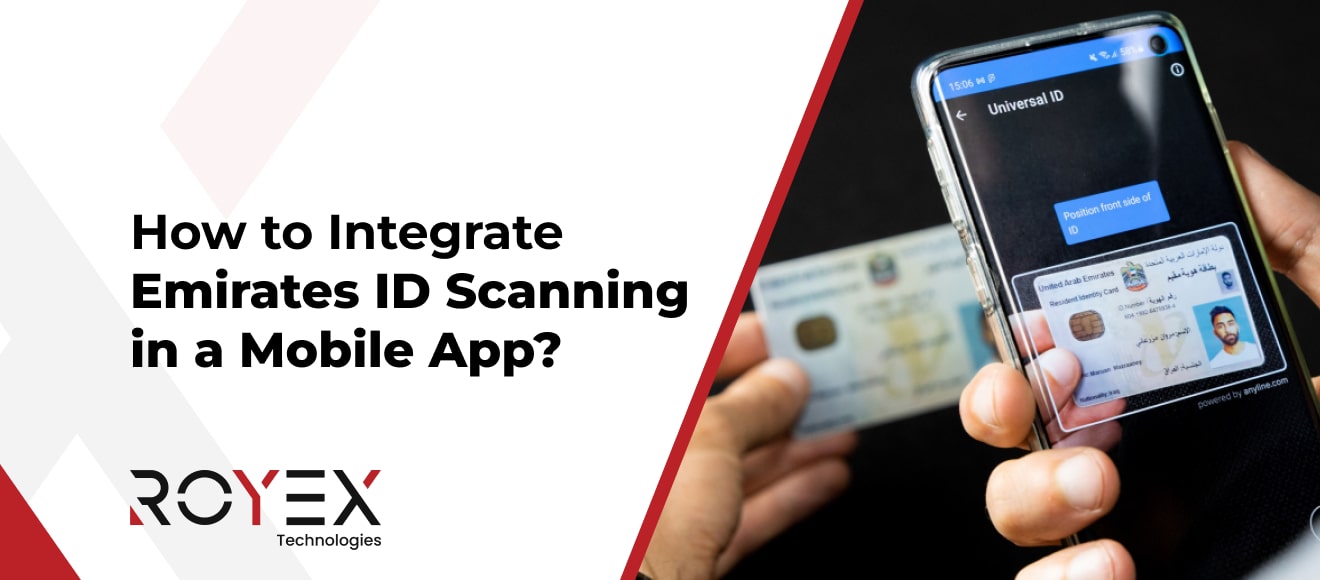
How to Integrate Emirates ID Scanning in a Mobile App?
Introduction
In the UAE, the Emirates ID is the official identification card issued by the Federal Authority for Identity and Citizenship (ICP). It is widely used for banking, telecom, healthcare, government services, and digital onboarding.
For mobile apps in sectors like fintech, real estate, telecom, healthcare, and e-commerce, integrating Emirates ID scanning provides a secure and seamless user onboarding experience.
This article explains how developers can integrate Emirates ID scanning into mobile apps, along with the technical considerations and compliance requirements.
1. Why Integrate Emirates ID Scanning?
-
✅ Faster onboarding – auto-fill user details from Emirates ID
-
✅ Improved accuracy – reduces manual data entry errors
-
✅ Enhanced security – ensures identity verification
-
✅ Regulatory compliance – aligns with UAE KYC (Know Your Customer) requirements
2. Methods for Emirates ID Integration
a) OCR (Optical Character Recognition) Scanning
-
Use the device camera to scan the Emirates ID.
-
Extract details like name, Emirates ID number, DOB, and nationality.
-
Can be implemented with libraries like Tesseract OCR, Google ML Kit, or ABBYY.
Pros: Easy to implement, works offline.
Cons: Accuracy depends on lighting and image clarity.
b) NFC (Near Field Communication) Scanning
-
Emirates ID cards contain an NFC chip.
-
Apps can read the card data using the phone’s NFC functionality.
-
Provides more accurate and secure data compared to OCR.
Pros: High accuracy, secure.
Cons: Requires NFC-enabled smartphones, official SDK access.
c) Integration with UAE Government APIs
-
For official apps or regulated industries, developers can request access to ICP or Smart Dubai APIs.
-
Provides direct, verified data from government databases.
-
Typically used in banking, telecom, and healthcare apps.
Pros: Official, reliable, and compliant.
Cons: Requires approval, legal agreements, and secure hosting.
3. Technical Implementation Steps
-
Choose scanning method – OCR, NFC, or API.
-
Implement SDK or library:
-
For OCR: Google ML Kit / Tesseract
-
For NFC: Android NfcAdapter or iOS Core NFC framework
-
Design secure data capture flow
-
Encrypt ID data during transmission (AES-256 / SSL).
-
Store minimal data to comply with UAE privacy laws.
-
Add verification
-
Cross-check scanned details with government APIs (if access is granted).
-
Test for accuracy
-
Test under different lighting, ID versions, and device models.
4. Compliance & Security Considerations
-
UAE laws require businesses to protect user identity data.
-
Follow GDPR principles (consent, data minimization, secure storage).
-
Never store Emirates ID images unencrypted.
-
Work with approved government service providers for sensitive integrations.
5. Example Use Cases
-
Banking Apps – instant KYC verification during account opening.
-
Telecom Apps – register new SIM cards with Emirates ID scan.
-
Healthcare Apps – link Emirates ID to patient medical records.
-
E-commerce Apps – verify age and identity for restricted products.
Conclusion
Integrating Emirates ID scanning into mobile apps enhances security, accuracy, and user experience, while also ensuring compliance with UAE regulations. Developers can choose OCR, NFC, or official API integration based on the industry and compliance needs.
For businesses in the UAE, having a trusted technology partner is critical to implementing these features securely.
👉 Royex Technologies is a leading Mobile Apps Development company Dubai, experienced in building secure, compliant, and high-performance apps with features like Emirates ID scanning, UAE PASS integration, and advanced KYC workflows. Partner with Royex to ensure your app meets both technical and regulatory standards in the UAE.





